Generative AI models like Stable Diffusion were trained on a huge number of images. A lot of variety is introduced during this training, which is why the model is so good at creating just about any type of image. All you have to do is describe what you want it to generate.
One of the best ways to ensure the generated results are similar to what you imagined is to specify an art style. There are countless art styles that you can mention in your prompts. If you're fairly new to using text-to-image AI models, my advice is for you to become familiar with at least some of the most popular art styles and movements.
In this article, I'm going to share certain art styles that I think produce the best results when you're using Stable Diffusion. At the time of writing this guide, the latest release of this generative AI model is Stable Diffusion XL 1.0, which is what I'm going to use to create all the images you'll see today.
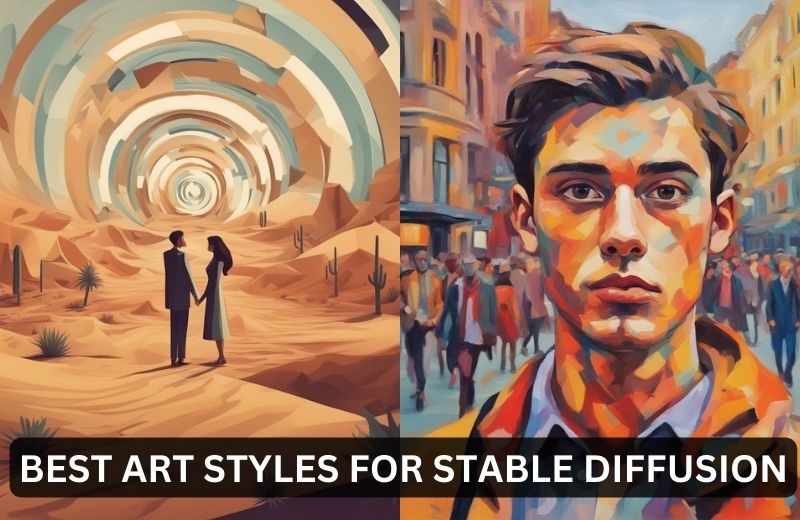
How to Choose an Art Style in Stable Diffusion
The first thing I want to mention is that there are preset styles within the Stable Diffusion XL 1.0 model. You can access them by clicking on the settings. There are 14 different styles to choose from, as pictured in the image below.

While I think all of these available preset options are awesome, there are many more styles that you can use. That's why I've decided to show you the results you can get from the 14 preset styles as well as 18 more styles that I picked.
When you choose a specific style within Stable Diffusion, you'll essentially pick a fine-tuned model that will produce images that look a certain way. For instance, if you choose the 'Anime' style, the result of every prompt you write will be generated in an anime art style.
If you want to use an art style that isn't included in the preset options, you'll have to mention it in your prompt. Let's say that you want to create an image of a futuristic dystopia for sci-fi themed content. Although you can just describe what you want the image to contain without mentioning a specific art style, you'll likely get better results if you write 'cyberpunk style' or 'cyberpunk aesthetic' in your prompt.
Another thing I feel the need to mention is that you can get the AI model to produce better images if your prompt is aligned with the art style you picked. If you were to choose the 'Photographic' style that produces photorealistic images, it's best to have your prompt include a description of something you'd see in the real world rather than a fantasy realm.
Now that you have a better understanding of how to use art styles in Stable Diffusion, let's take a look at some beautiful prompt examples that I came up with.
32 Best Art Styles for Stable Diffusion
I absolutely love the preset styles available in Stable Diffusion. But if I'm being completely honest, I don't use them too often. I prefer to select the 'No Style' setting and then mention an art style in my prompt. Of course, you don't have to use this approach at all.
Before I start showing you the prompt example I wrote for this article, I want to take a second to mention that I also wrote an article about the 33 best art styles for Midjourney. If you love using Midjourney, you should check out that article as it includes some great styles and prompt examples.
Without further ado, let's get back to talking about Stable Diffusion and check out these wonderful prompt examples below.
14 Preset Art Styles in Stable Diffusion
I will start by first exploring each of the 14 art styles that are already available in Stable Diffusion. I'll share both the prompt examples and the generated results.
Anime Style
prompt #1: mighty warrior in front of a long wooden trail that leads to a region where evil monsters have taken over, the warrior is facing a quest so big it will determine the future of the whole world
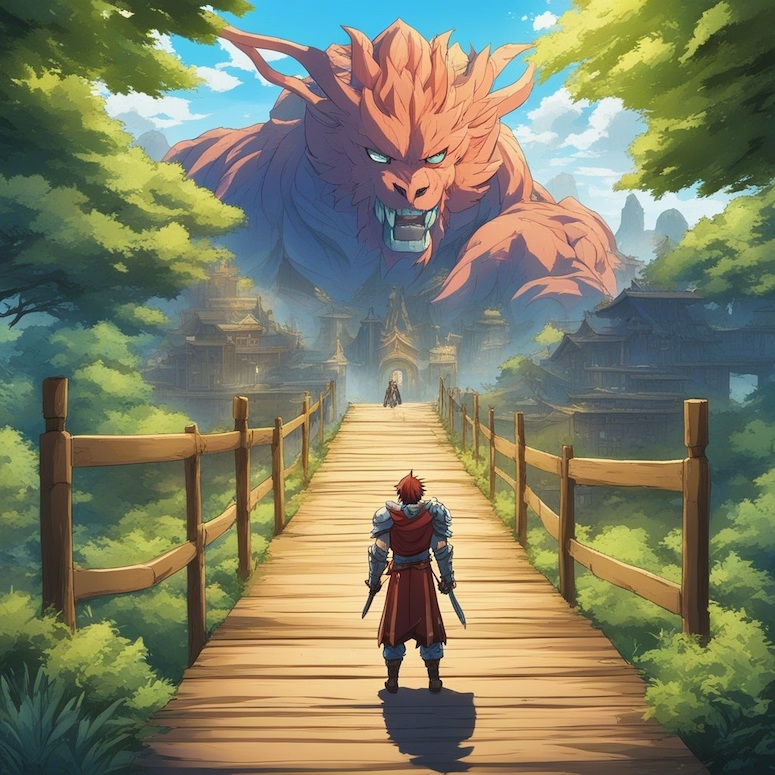
The first image I created involved the use of the 'Anime' preset style. I provided the AI model with a short description of what I wanted the image to represent and it did a great job. I used the default aspect ratio, but there are several different options to choose from if you're looking for other dimensions.
Photographic Style
prompt #2: young woman dressed in a stylish and modern business outfit and wearing sunglasses is standing in front of a corporate building on a busy day, the woman looks confident
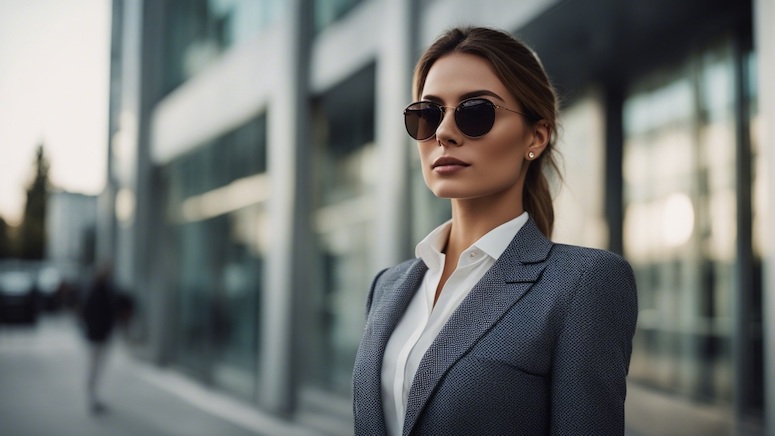
For this image, I used the 'Photographic' style in Stable Diffusion. Although the image looks great, I have to say that Midjourney is currently much better at generating results that involve humans. I had to generate several batches of images to get one that I liked, while in Midjourney I usually get a great result in the first set of four images.
Digital Art Style
prompt #3: young woman praying to the universe, a work of art inspired by astronomy, the boundless universe
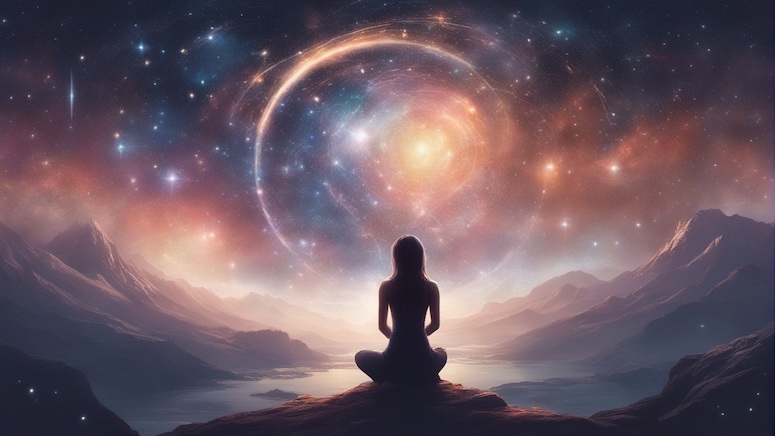
I really like this result. It came from a relatively simple prompt and idea. Although I chose the 'Digital Art' style, which is a broad term. I could've further specified a certain art movement or aesthetic, but I decided to let the AI model randomly choose how the image was going to look.
Comic Book Style
prompt #4: character design, male superhero named The Phoenix who has the ability to resurrect himself, he is dressed in a superhero outfit that features red, yellow, and orange colors, personified symbol for a phoenix
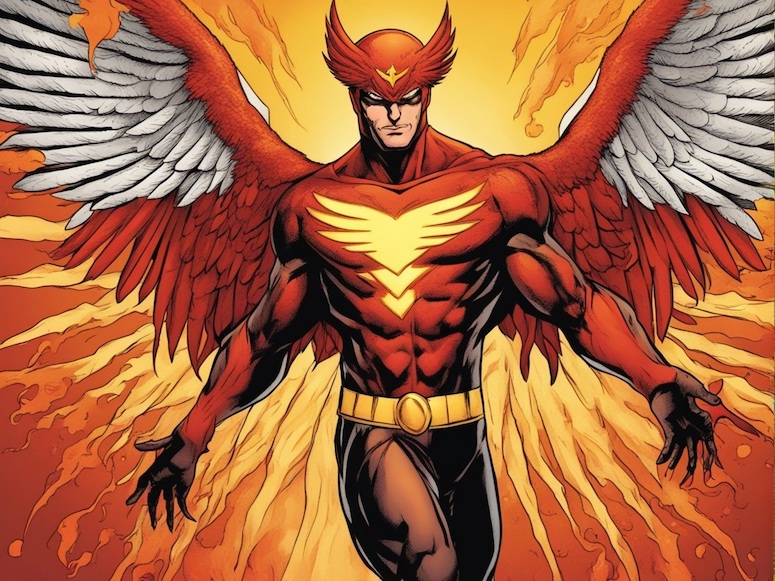
Since there is a 'Comic Book' preset style in Stable Diffusion, I decided to create a character. There is probably a character like this in some comic books, but I didn't want to take one of the most popular ones and recreate it. Instead, I wanted something a bit more specific. I didn't mention that the hero should have wings, but I'm glad that the AI model generated him this way because I think he looks good.
Fantasy Art Style
prompt #5: fictional world where it's an eternal winter, the region is occupied by necromancers who have cast deadly purple auras around the region making it only habitable to necromancers, evil spells, purple hues

I previously mentioned how important it is for your prompts to be aligned with an art style you chose. For the fantasy art style, I imagined a world where there is an eternal winter. As you can see from the previous prompt as well as this one, you can specify one or more colors you want to be used in the images you're making.
Analog Film Style
prompt #6: an old farmhouse in the middle of nowhere
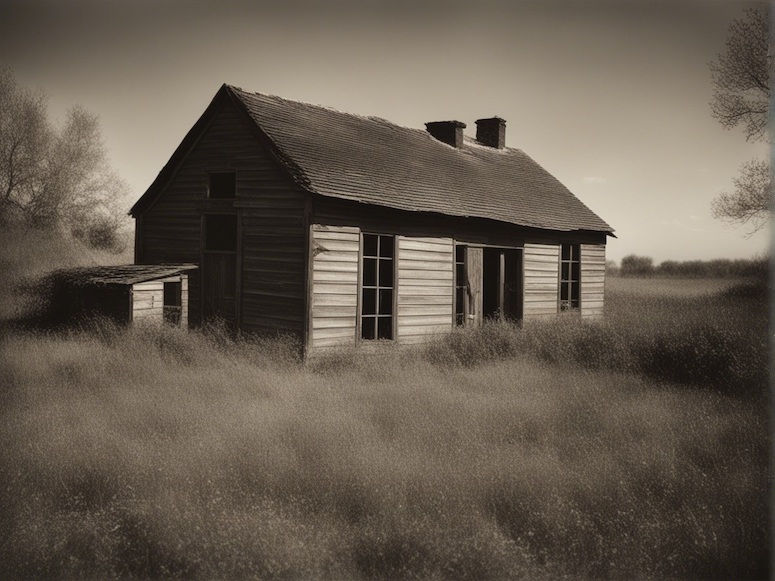
Sometimes, you don't need to write even a few lines of text to generate an awesome image. This combination of the simple prompt and the 'Analog Film' style produced an amazing result. If I had an analog camera, I would mostly take photos of abandoned houses and buildings.
Neon Punk Style
prompt #7: futuristic female warrior who is on a mission to defend the world from an evil cyborg army, dystopian future, megacity
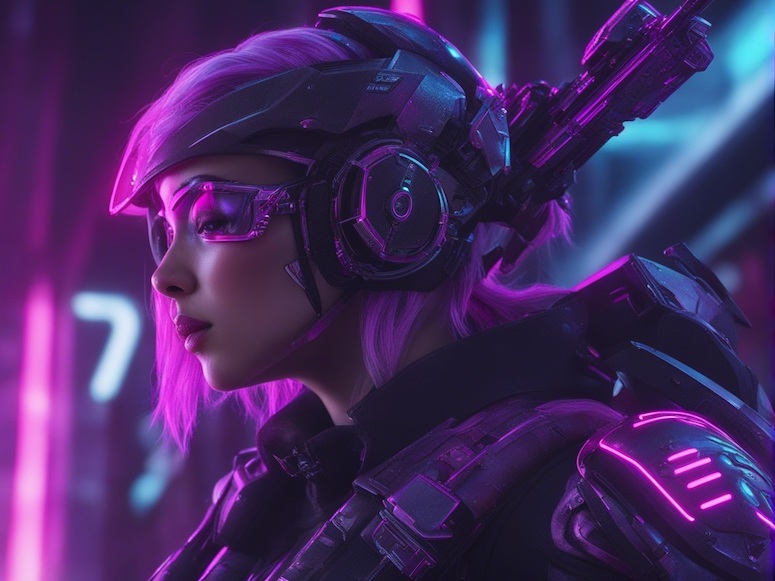
The 'Neon Punk' preset style in Stable Diffusion produces much better results than you would expect. This is an excellent image of the character that I described. I particularly love the color palette that's featured in this art style.
Isometric Style
prompt #8: beautiful fountain from the ancient times made out of rock and containing sculptures of ancient gods with discreet golden details
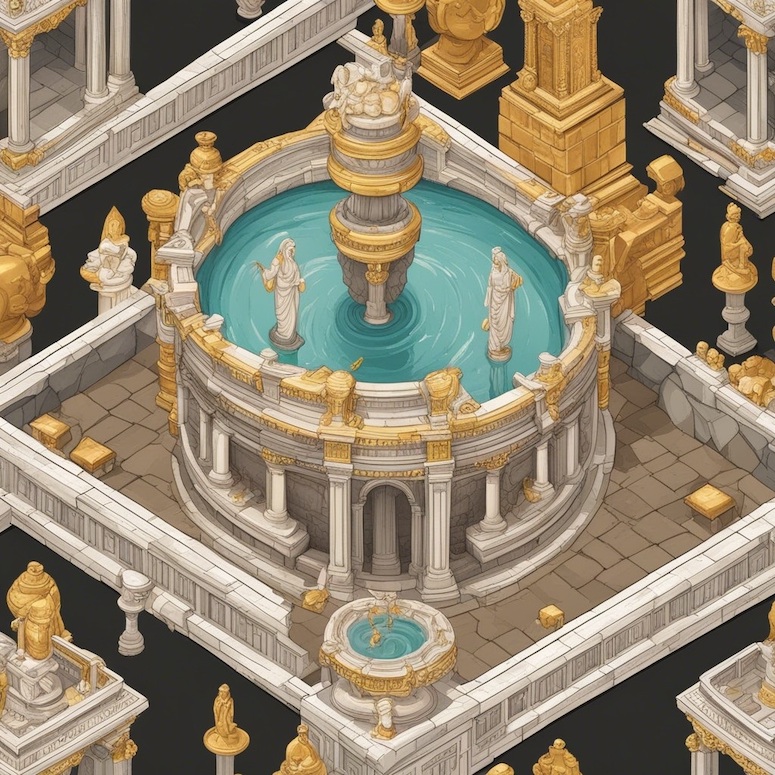
If you want to create images of houses, buildings, fountains, castles, and any other structures, you should use the isometric preset style. Isometric art will make two-dimensional figures appear three-dimensional. You can see an example of this in the image above.
Low Poly Style
prompt #9: medieval weapons for a fantasy themed RPG, sword, axe, mace, flail, war hammer
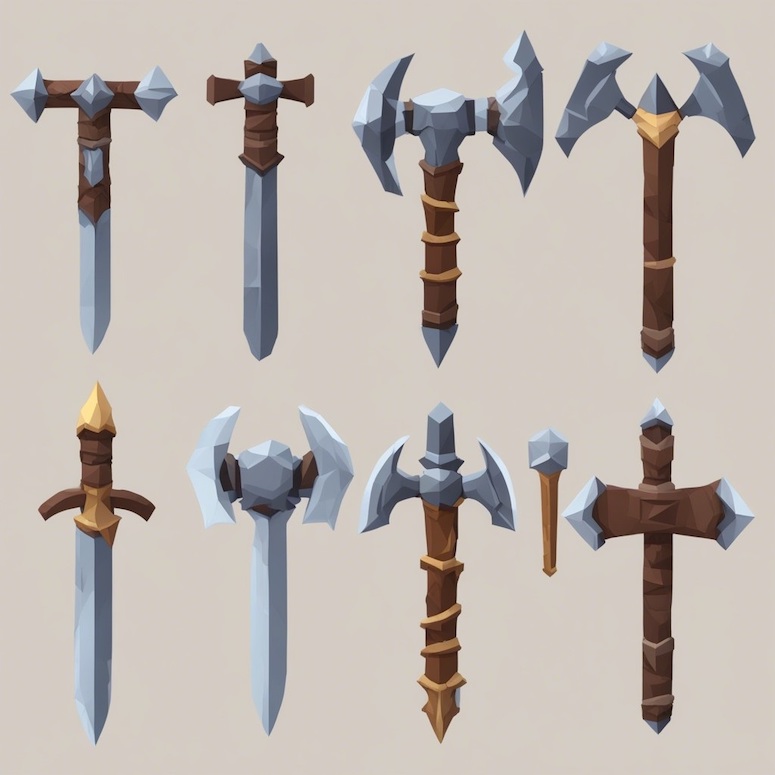
If you want to make game assets with Stable Diffusion, I recommend that you use the preset 'Low Poly' style. Although it didn't generate all of the weapons I mentioned, the model did provide me with some great designs. If you're creating a video game, you can make hundreds of asset design ideas in less than 15 minutes.
Origami Style
prompt #10: powerful dragon with emerald scales, fiery eyes and huge wings
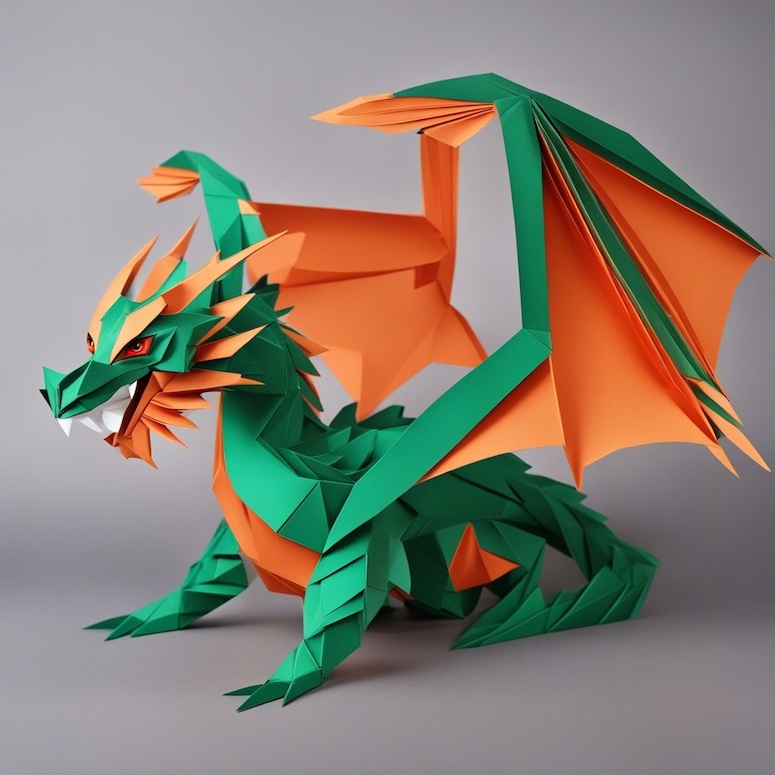
The origami Stable Diffusion model can create some stunning images. You can even make incredibly interesting abstract art with this style. However, I decided not to include an abstract origami idea that could be interpreted in different ways but to instead make a powerful dragon. I'm very impressed with the result.
Line Art Style
prompt #11: stunning natural landscape, waterfall in the distance, winter
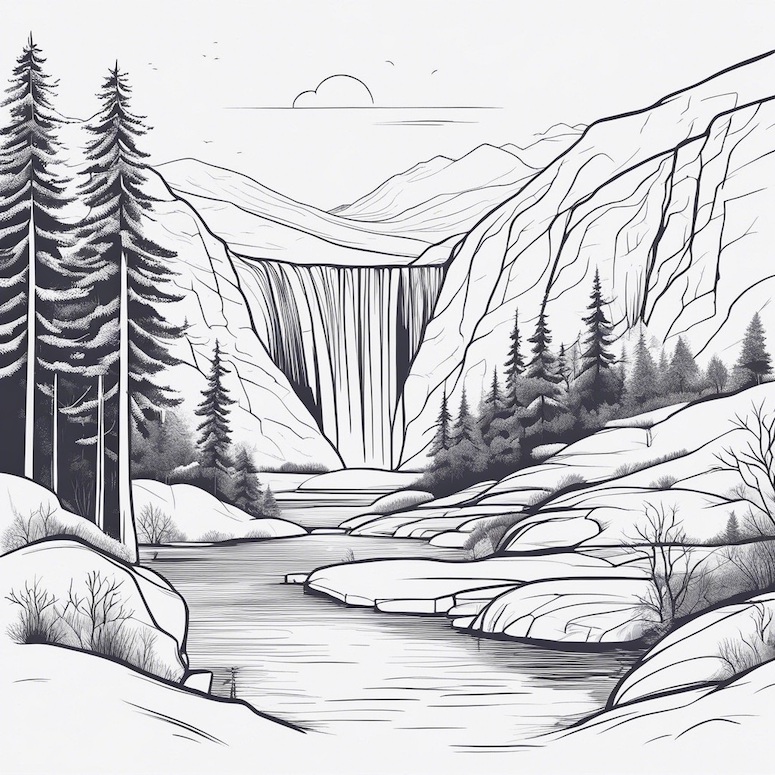
The 'Line Art' style can be used to get a quick sketch for a particular idea you might have. You can use it to make characters, create design concepts, etc. These sketches can come in handy when you want to send a rough draft of an idea to a professional designer.
Cinematic Style
prompt #12: male detective looking around a trashed apartment hoping to find clues that will help him solve a horrific crime, urban mystery, set in 1990s, New York City apartment

Wow! This one caught me off guard. It was literally the first image that was generated from my prompt and it looks absolutely amazing. It really feels like this is from a scene in an actual movie.
3D Model Style
prompt #13: modernist beachfront villa with an infinity pool and expansive glass walls, the villa has a unique design with intricate details
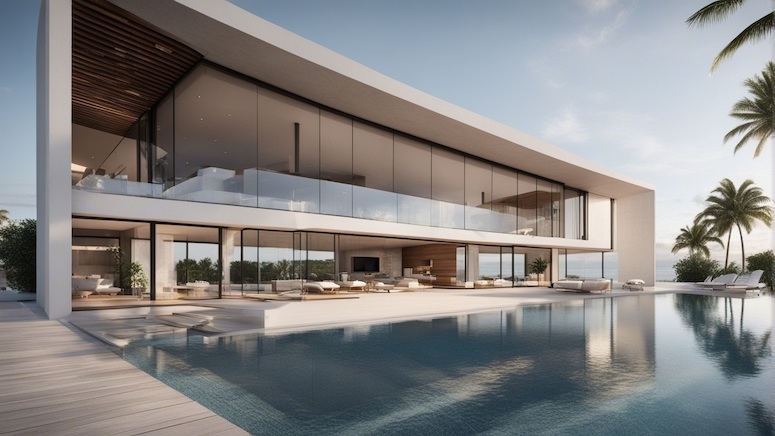
The '3D Model' style is perfect for images like the one above. If you want to create a stunning image of the exterior or interior of a building, you should use this style.
Pixel Art Style
prompt #14: evil skeleton king sitting in a throne made out of bones, red background, scary
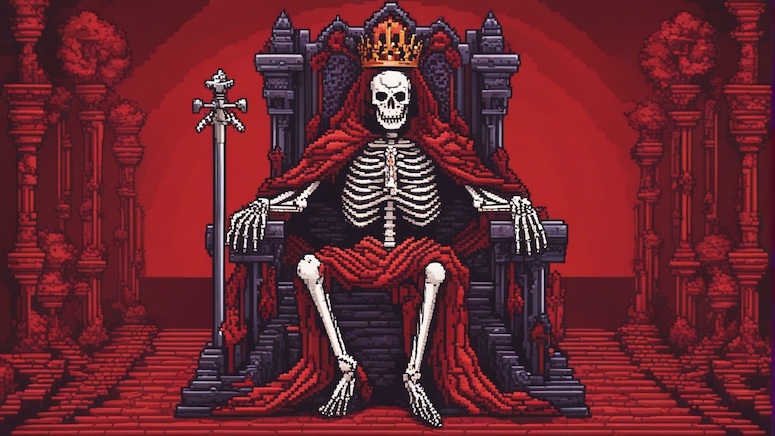
I really like pixel art, so I'm glad that this is one of the styles that is available in Stable Diffusion. I mentioned in my prompt that I want the image to be scary, and it definitely gives off a creepy vibe.
8 Additional Art Styles for Stable Diffusion
So far, I've shown you prompt examples for only the styles that are already available with Stable Diffusion. Now, I'm going to use the ones that aren't. To do this, I simply choose the 'No Style' setting and mention a specific art style in my prompts.
Abstract Art Style
prompt #15: abstract art style, abstract painting, pulsating quasar that is sending an enormous amount of energy throughout the universe

I absolutely love using text-to-image models to create abstract art. It's difficult to imagine exactly what a quasar would look like from a small distance, but we do know that it's powered by a supermassive black hole.
ASCII Art Style
prompt #16: ASCII art style, portrait of an old man staring at a lake
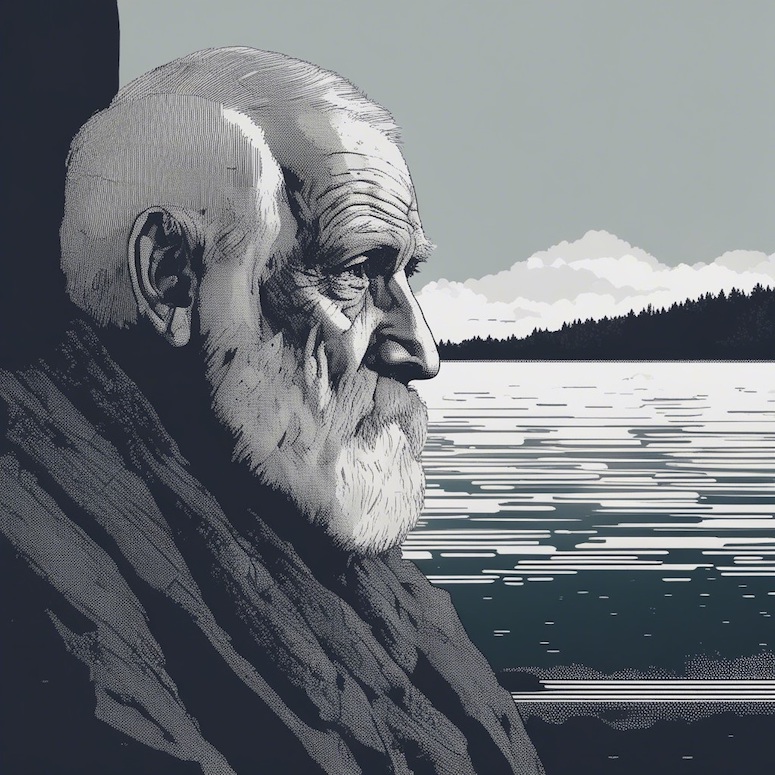
The ASCII art style has become increasingly popular over the last several years. It features a graphic design technique that incorporates the use of the 95 printable characters defined by the ASCII Standard. You can use this art style in Stable Diffusion to generate images with a particular aesthetic.
Cubism Art Style
prompt #17: cubism art style, a young couple in the middle of a mysterious desert where different rules of physics apply, stuck in a time loop
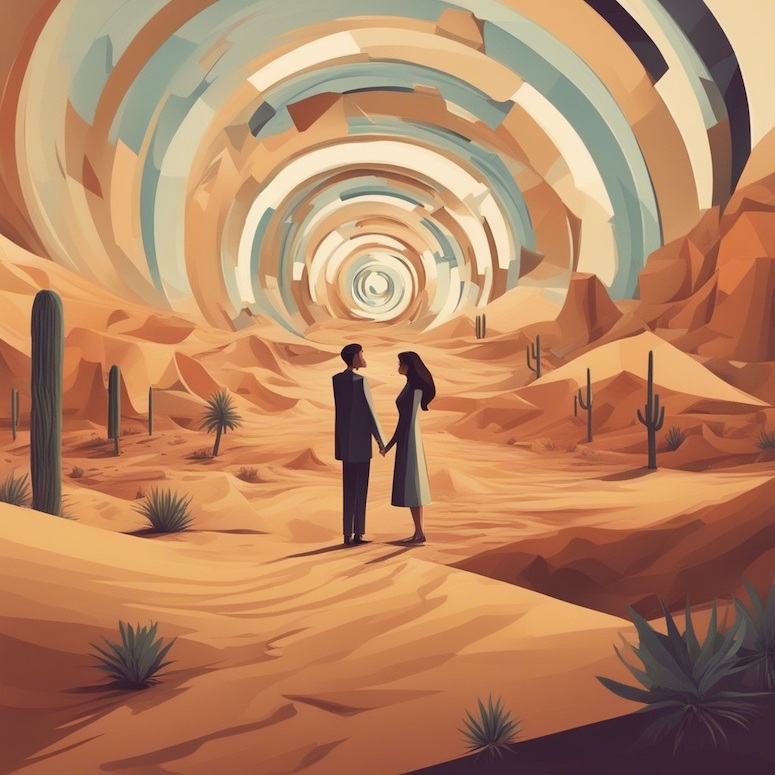
Pablo Picasso is a legendary artist whose name is still mentioned countless times across the whole world every single day. One of the things Picasso is known for is popularizing an art style called cubism, which completely revolutionized the way artists represented reality. As you can see from the image above, you can produce some great images with this style. This one looks like it could be an album cover.
Metaphysical Art Style
prompt #18: metaphysical art style, reminiscing about all the wasted opportunities in the past and thinking how different things would be with the knowledge and wisdom we possess today
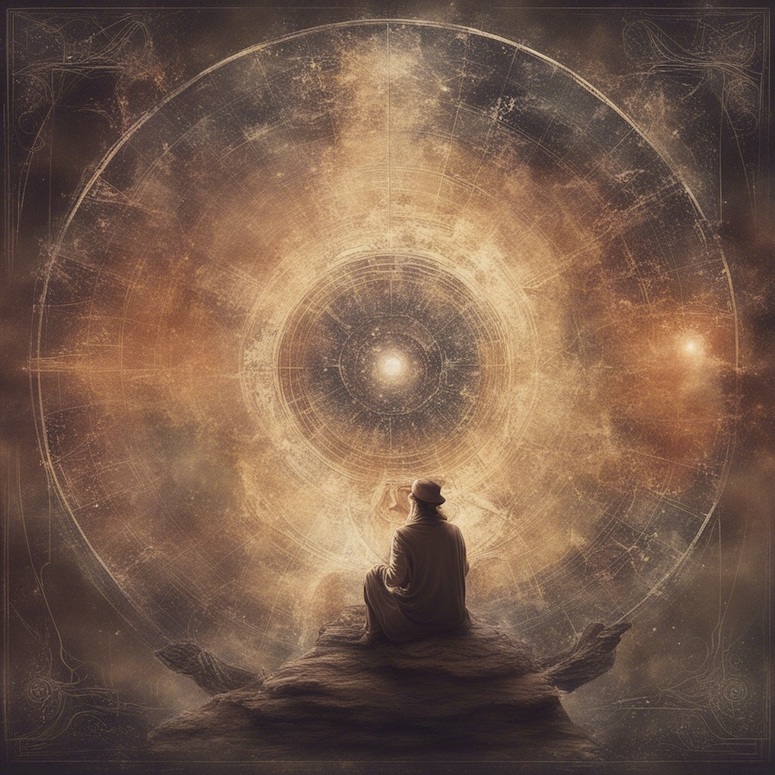
This is an art piece that really makes you think. There's a lot that you can analyze in this image. The prompt is not conventional, so it's interesting to see
Pop Surrealism Style
prompt #19: pop surrealism art style, rock start sitting alone in a luxurious hotel suite surrounded by alcohol and looking desperate
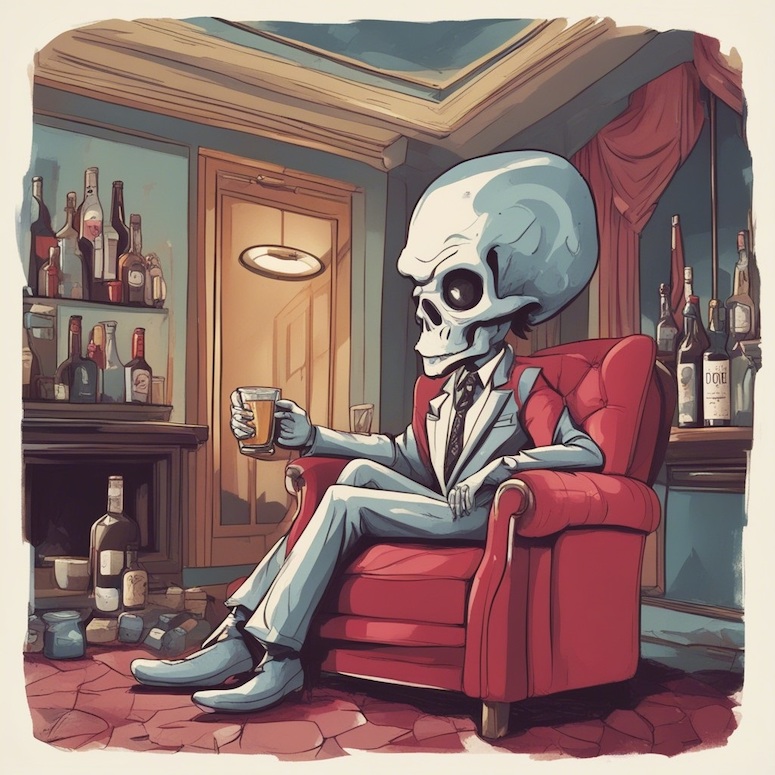
Pop surrealism is often referred to as lowbrow art and represents an underground visual art movement that first became popular in California during the 1960s. This is a very interesting image because more than a dozen results showed a human as the main character but here there's a peculiar skeleton sitting in a chair.
Rococo Art Style
prompt #20: rococo art style, a young woman is daydreaming while sitting in a secret garden that's in full bloom, the woman is happy and excited

Rococo is a style that arose in France during the 1730s as a response to the formal and geometric properties of the Louis XIV style. The movement features pastel colors, asymmetry, and a dramatic style. This style is often found in church interiors in various parts of the world. You can use it to create some stunning images in Stable Diffusion.
Surrealism Art Style
prompt #21: surrealism art style, the cosmic clock that measures both time and space, as well as the rate of the expansion of the universe, the mysterious clock humans will never have access to
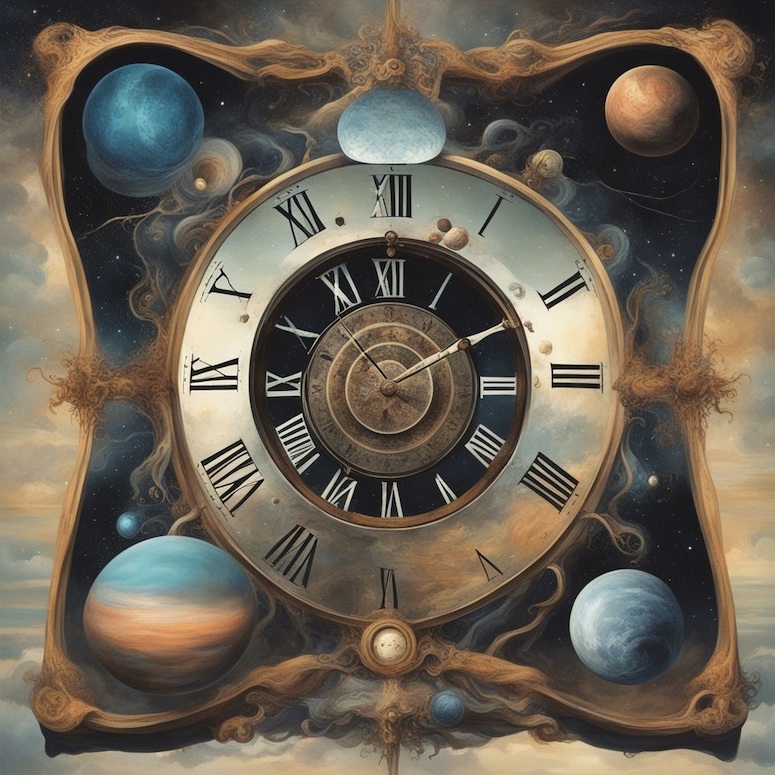
If you're a fan of some of the works of Salvador Dali, you're a fan of the surrealist art movement. This movement was focused on exploring the workings of the mind and putting an emphasis on the irrational. Now that I've spent some time looking at the clock above, I kind of want one that looks exactly like it.
Fauvism Art Style
prompt #22: fauvism art style, portrait of a young man caught in the middle of a busy urban street in a huge city with crowds of people walking by him

Fauvism is an art style that became popular during the early 20th century. It's recognized by its painterly qualities. As a response to the realistic properties of Impressionism, this art style values strong color more than realism.
This is also the last prompt example that will be featured in this article. I hope you liked all of the images I created for you today. But that doesn't mean this is the end of the article. There are still more art styles we'll explore.
10 More Art Styles for Stable Diffusion
I've already shared a lot of different prompt examples and the images that were generated from them. I could keep going but I think that this article is already long as it is. If you made it this far, you'll be able to learn 10 more great art styles you can use when you're making images with Stable Diffusion. However, I won't be including prompt examples and the results for these styles.
Let's check out some more styles that work great in Stable Diffusion:
- Symbolism - This is an art movement that emerged during the second half of the 19th century. It was first only a literary movement, but soon painters decided to use it in visual arts as well. This style focuses more on ideas and emotions than an objective representation of the real world.
- Pop art - This is an art style that became popular thanks to many British and American artists who drew inspiration from popular products that were seen every day. This was a response to the elitist fine art movement. One of the most recognizable names that popularized this art movement is Andy Warhol.
- Minimalism - As you can tell from the name of this art movement, it favors simplicity and the reduction of elements to their essential forms. Minimalism is also one of my favorite art styles.
- Expressionism - This is an art style that often incorporates distorted proportions and bold brushwork. It's focused on representing subjective experiences through exaggeration.
- Art Deco - The Art Deco movement was extremely popular during the first half of the 20th century. It's characterized by rich colors and bold geometric patterns. This style has been widely used in fashion, architecture, and decorative arts.
- Cave Painting - This is an interesting style you can use in Stable Diffusion to get incredible results. I personally like to create abstract and futuristic images with this art style.
- Post-Impressionism - One of the greatest artists of all time represented the movement known as post-impressionism. The artist I'm talking about is Vincent van Gogh. This art style puts an emphasis on the use of form and color to express individual perspectives.
- Pointillism - Pointillism refers to a technique where tiny dots are used to create images that you see when you're looking at them from a distance. The viewer blends the dots into coherent colors and shapes.
- Romanticism - It's best to use the romanticism art style when you want to depict either emotional human experiences or beautiful natural landscapes.
- Steampunk - This is one of the art styles I absolutely adore. It shows how the people in the 19th century imagined the world would look like in the future. It makes heavy use of steam-powered machines.
That's about all I have selected when it comes to art styles that can be used in Stable Diffusion. I sincerely hope that you learned about new art movements and aesthetics today, and that you're now inspired to write some prompts.
Final Thoughts
I covered many different art styles that you can use to create stunning images, but there's still a lot left to be explored. I encourage you to find other art styles that you can use in your prompts to get better results.
One of the things you should focus on is learning how to write better prompts for each style. You can do this by researching how and when a specific style was created, as well as what themes it's usually associated with.
If you've been writing prompts for text-to-image models for a while, you already know that using them can be a great interactive learning experience. Your goal is to get the model to create the best images possible, but the only way to do this is by carefully crafting your prompts and educating yourself on art movements, aesthetics, color theory, and so on.